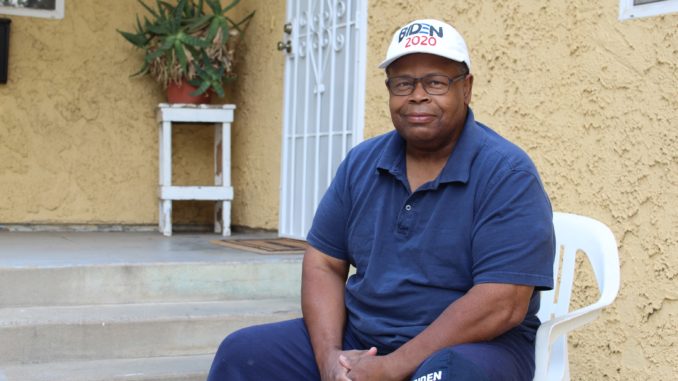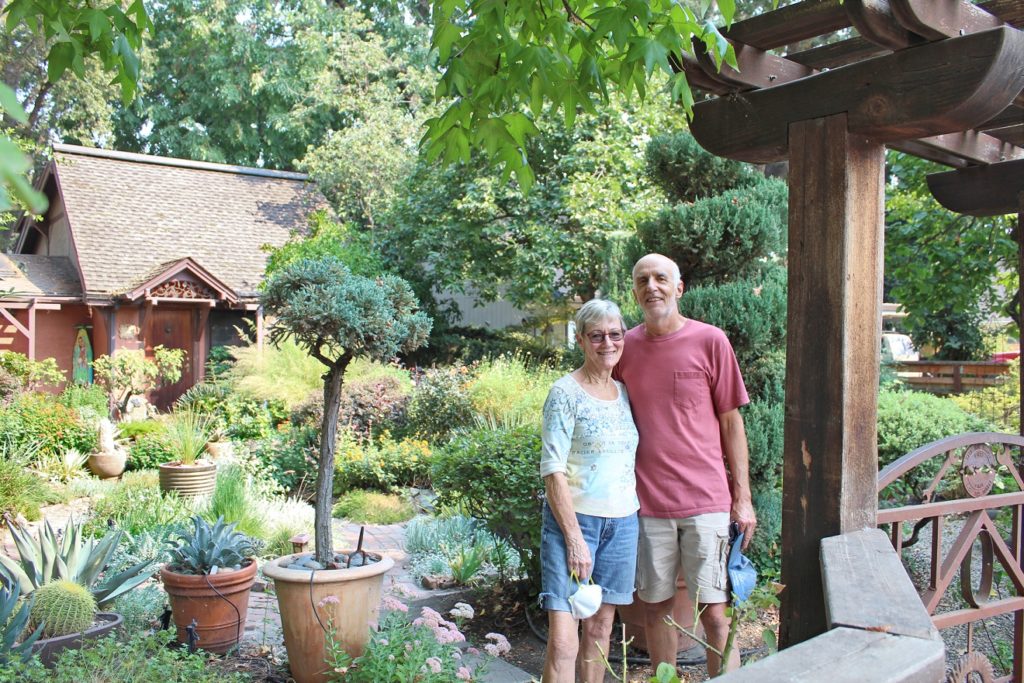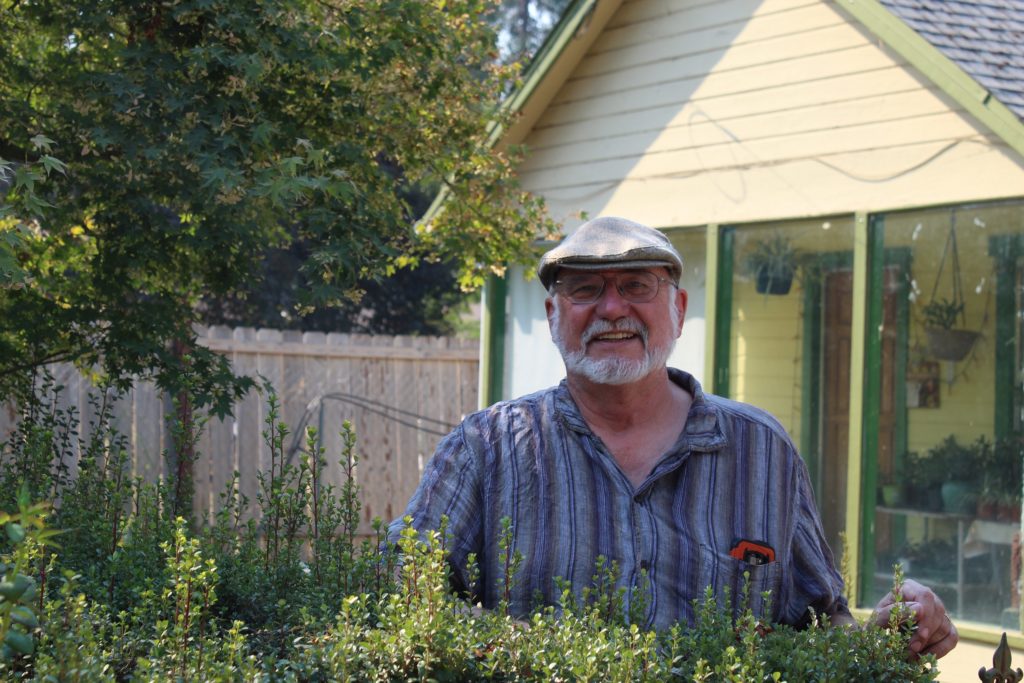

As Richard Roth walked down a street in the Chapman neighborhood of Chico, he paused and marveled at a hen crossing the road with her chicks.
“Look! See, that’s what I love,” he said.
It isn’t the chickens, per se, but the fact that chickens do cross the road to get to the other side where he lives. Chapman is a neighborhood of marvels—with houses in a kaleidoscope of colors and variety of sizes with overflowing gardens, and rough, often narrow roads without sidewalks and gutters. The inhabitants are diverse, too: families, multi-generational businesses, retired homeowners and formerly homeless people all call Chapman home.
And now, as of July 1, the residents of Chapman, as well as the nearby Mulberry neighborhood, are officially part of the city of Chico.
In less than a month, they will get to vote for a City Council representative for the first time. They’re deciding between Rich Ober and Deepika Tandon.
While some in Chapman and Mulberry are still concerned about the potential for the annexation to change their neighborhood’s unconventional, semi-rural character, the election represents an opportunity to provide a voice to folks who’ve watched the city grow around them without having a say in its policies.

Vincent Ornelas, a Chico State professor and 12-year resident of Chapman, called it an exciting, welcome change.
“To me, these next several years, it’s going to be a really interesting case study to see what happens with the [Chico City Council] agenda … it’s going to be about, ‘What are you doing [for] the neighborhood?’” Ornelas said.
Potential for change
The Chapman and Mulberry neighborhoods are part of southern Chico—Chapman bordered by Little Chico Creek and East 16th Street in the north and Boucher Street and 20th Street Community Park on the west and east; Mulberry encompassing about six blocks east of Fair Street and from 21st Street to the Silver Dollar Fairgrounds.
These neighborhoods are part of Chico’s District 7, which also includes the “east streets” between downtown and Hwy 32, a few areas near the Chico Mall, and the historic Barber neighborhood. According to demographic data compiled by the city of Chico, it encompasses 13,595 people. The district is one of Chico’s more diverse parts of town, with the highest percentage of Latino residents in the city and second highest percentage of Asian residents. (The latest estimate of just the Chapman/Mulberry area’s population was 1,300, in 2014.)
Alois Scott Jr. lives in his childhood home on the same lot his parents purchased in Chapman in the 1960s. He remodeled it after his parents passed away. Now that his property is within the city, he’s in the process of splitting his lot and creating new single-family homes.
It’s a project he’s passionate about because he sees it as a way to honor his family and help improve the quality of the neighborhood. When he tried the development process with the county, he found the requirements cumbersome. Plus, he’s appreciated the ease of access having city offices close by.
“Personally, I think [annexation] is nothing but a positive step for Chapman,” Scott said. “At some point, we’ll be able to have our streets improved, and our fire, police and emergency services will be just as good as what the city has now.”
And if folks don’t like it, now they can run for city office, he added. That is a big deal, having the ability to actually have a representative from Chapman who “can go and fight for things that will actually allow people to improve the area we live in.”

Along the same lines, Ornelas is hopeful that annexation into the city will mean improvements, especially when it comes to safe transportation. While he appreciates the uniqueness of Chapman, he said it cannot come at the expense of children and elderly and/or disabled residents who need to be able to get around safely.
“These groups should be a priority over everything else,” he said.
According to the plan
Many Chapman residents are proud of their neighborhood’s character, and their desire to maintain it hasn’t changed post-annexation.
Decades ago, Roth—along with many other long-term residents of the neighborhood—helped develop the Chapman/Mulberry Neighborhood Plan for this very reason. It was adopted by the city in 2004. A primary concern has been protecting the area from speculating developers and gentrification that could push poor residents out.
That’s been a concern of Christy Santos and Mark Hooper’s. The couple moved to Chico in 1976, arriving in Chapman with whatever they could pack into their Volkswagon bus. At the time, their property cost less than $10,000, and their dwelling was incomplete, with no kitchen or bathroom—but it was what they could afford.
“We saw lots of potential here,” Santos said. They camped out on their property and fixed it up. They planted a vegetable garden and rode their bicycles to work.

Having a local City Council member is the neighborhood’s “best bet that we’ll get reasonable planning and representation,” Hooper said.
Brendan Vieg, the city’s Community Development Director of Planning and Housing, knows the Chapman/Mulberry plan well—he worked with residents on the city’s behalf during its drafting and subsequent adoption.
The zoning map for the neighborhoods is a “sea of yellow,” he said, marked for single-family residential development. Vieg knows speculation is a concern, but large-scale development is simply “not allowed” without changing city code and zoning laws.
A couple of neighborhood residents have started the process of building single-family homes since the annexation. In his view, the neighborhood may continue to see such smaller-scale development, particularly on underdeveloped, larger lots that now have access to city sewer and services.
“I don’t see that necessarily as a bad thing,” Vieg said. “It might improve the quality of the neighborhood.”
Roth is skeptical. He’s more apt to make a judgment call after Chapman elects its first district representative and residents can see how their council member responds to neighborhood concerns—and if they have to keep fighting to preserve their way of life.
“It’s a rigged system out there. It’s rigged against poor people. It’s rigged for business,” he said. “It’s hard for people to build a house.”
However, Roth still sees potential in the annexation: The city could create something like an “innovation district”—encouraging and allowing for tiny homes, a community land trust and other experimental, affordable types of housing opportunities. Chapman and Mulberry, he argued, would be the perfect place.
“Having the districts actually—maybe—works a bit better. We’ll see,” he said. “Mostly, let us be.”
Follow this link for a map of Chico City Council districts.




This is great news! I grew up in Chico and had friends who lived in South Chico. Always seemed a shame that people living in the area didn’t receive support services from the city to improve their neighborhoods. Hope this brings positive changes to the area.